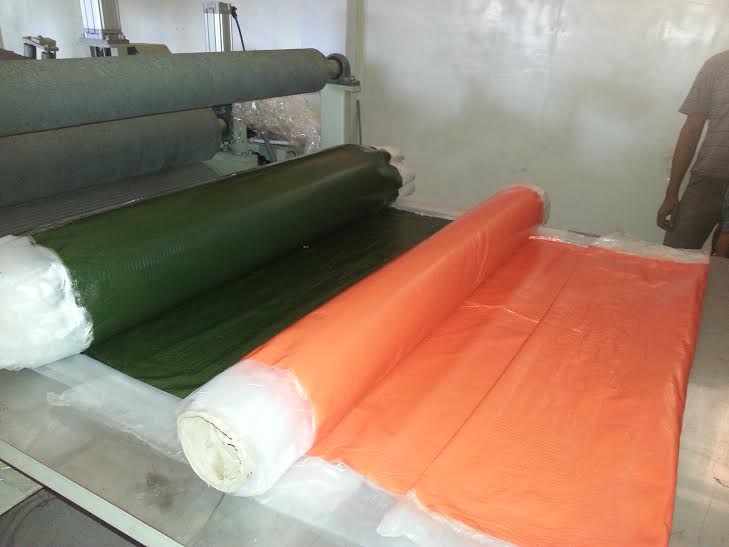

SHEET MOULDING COMPOUNDS
Product description
Sheet Molding Compound (SMC) is a compression molding compound often used for larger parts where higher mechanical strength is needed. SMC is a fiber reinforced thermoset material. As with BMC, thermoset Sheet Molding Compound (SMC) is a mixture of polymer resin, inert fillers, fiber reinforcement, catalysts, pigments and stabilizers, release agents, and thickeners and possesses strong dielectric properties.
Sheet Molding Compound Offers Superior Strength and Electrical Insulation
Sheet Molding Compound (SMC) is a compression molding compound often used for larger parts where higher mechanical strength is needed. SMC is a fiber reinforced thermoset material. Glass reinforcement is between 10% and 60%, and glass length is slightly longer than Bulk Molding Compound (BMC) - between 1/2-inch and 1-inch (25mm).
Compound (SMC) is a mixture of polymer resin, inert fillers, fiber reinforcement, catalysts, pigments and stabilizers, release agents, and thickeners and possesses strong dielectric properties. Manufacture of sheet molding compounds is a continuous in-line process. The material is sheathed both top and bottom with a polyethylene or nylon plastic film to prevent auto-adhesion. The paste is spread uniformly onto the bottom film. Chopped glass fibers are randomly deposited onto the paste. The top film is introduced and the sandwich is rolled into a pre-determined thickness. The sheet is allowed to mature for 48 hours.
Sheet molding compounds can be molded into complex shapes. Superior mechanical properties and surface appearance, plus excellent electrical insulation make this thermoset material ideal for automotive Class A body panels, high-strength electrical parts, business equipment cabinets, personal watercraft, and various structural components.
Sheet molding compounds (SMC) are fiber-reinforced thermosetting semifinished products. They are produced in thin uncured and thickened sheets between 1 and 3 mm thick that can be handled easily. To a larger extent, SMC is a generic term that designates such types of compounds, together with the process to convert them into large composite parts (average area of 0.7 m2, with a maximum area of up to 4 m2), which mainly display shell-like geometry (average thickness of 2.5–3 mm). This process is usually achieved through compression molding. It is industrially profitable for medium volume production. Also note that SMC can be injected. Roll forming was also reported as an interesting process to make SMC parts [1–3]. SMC compounds include short, that is, discontinuous, fibers or fiber bundles that are impregnated between two layers of a resin paste. Various types of fibrous reinforcement can be utilized: glass fiber bundles, that is, a strand of individual glass filaments, which are most common, carbon fiber bundles, plant-based fibers, or hybrids. The typical length of the reinforcement is about 25–50 mm. The volume fraction of the fibrous reinforcement ranges between 10% and 65%. The resin paste, that is, the composite matrix, consists of a mixture of thermosetting resin (usually polyester but also vinylester and epoxy), fillers (calcium carbonate, alumina, etc.), and additives such as initiators, inhibitors, thickeners, mold release agents, and low profile additives (LPAs). The resin paste is thickened before molding: the paste viscosity is increased so that the SMC is a ‘‘putty-like’’ material. This is a fundamental point of the SMC technology concept, which allows the sheets to be easily handled and the paste to drift the fibers during compression molding. This feature makes a clear distinction between SMC and other comparable thermosetting compounds such as bulk molding compounds (BMC) and continuous impregnated compounds (CIC). The SMC process comprises two major distinct steps: compounding and compression molding
Advantages of SMC
The most important and most frequently talked about advantage of sheet molding compound is its light weight when compared to other substances, including metals and even other polyesters such as bulk molding compound (BMC). For this reason, SMC has replaced metal components as the primary material used for a number of automotive parts. It has also seen use in the manufacture of baths, spas, and arena, cinema and stadium seating.
In addition to its light weight, SMC is easy to produce, and can be manufactured in high volume. Combined with the straightforward nature and short production cycle of the compression molding process, parts made using SMC can be created in similarly high volume in a small amount of time.
However, SMC’s lightweight nature does not necessitate any sacrifice in strength. It is sturdy and durable, capable of resisting impact even at high speeds. The compound is even approved for use in the outer shells of passenger vehicles, where it regularly receives high scores in crash tests.
Lastly, sheet molding compound is an extremely economical choice. Manufacturers can save money on all aspects of the production process, from minimal labor costs to reduced waste. As a further bonus, SMC is time-efficient as well – it can be primed in-mold rather than needing to wait until after the molding process has finished. However, to achieve class A finishes, a post mold painting process is required.
The introduction of SMC was justifiably seen as a revolution in parts manufacturing, heralding the shift away from metals and towards polymers. Even today, SMC is a solid choice with many tempting advantages.
However, there is something that does what SMC and compression molding does even better – and it’s called long fiber injection.
